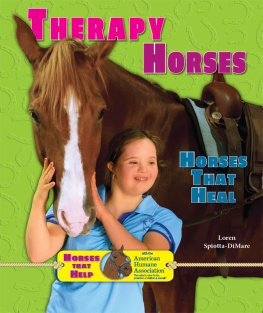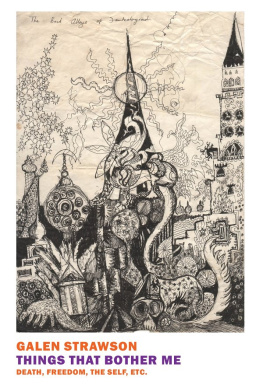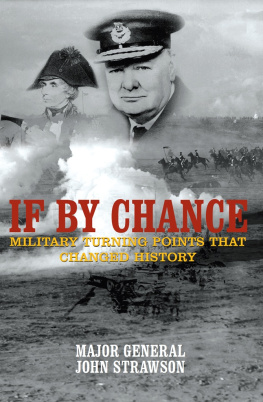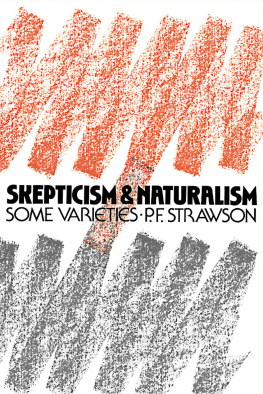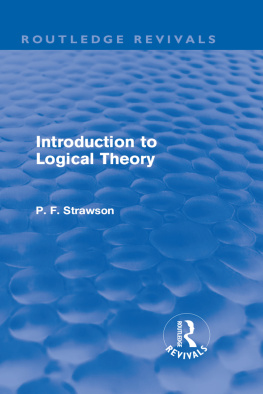Hussars, Horses and History
John Strawson
First published in Great Britain in 2007 by
Pen & Sword Military
an imprint of
Pen & Sword Books Ltd
47 Church Street
Barnsley
South Yorkshire
S70 2AS
Copyright John Strawson, 2007
9781783460458
The right of John Strawson to be identified as Author of this Work has
been asserted by him in accordance with the Copyright, Designs and Patents
Act 1988.
A CIP catalogue record for this book is
available from the British Library
All rights reserved. No part of this book may be reproduced or transmitted in any form or by any means, electronic or mechanical including photocopying, recording or by any information storage and retrieval system, without permission from the Publisher in writing.
Typeset in 11/13pt Sabon by
Lamorna Publishing Services
Printed and bound in England by Biddles Ltd
For a complete list of Pen & Sword titles please contact
PEN & SWORD BOOKS LIMITED
47 Church Street, Barnsley, South Yorkshire, S70 2AS, England
E-mail: enquiries@pen-and-sword.co.uk
Website: www.pen-and-sword.co.uk
Acknowledgements
First I would like to thank Brigadier Henry Wilson, Publishing Director of Pen & Sword Books Limited for his readiness to look at the first draft of these memoirs and for his subsequent suggestions and encouragement for some amendments to it.
I am most grateful to the following for permission to reproduce the painting Ladies Bathing by JEC Mathews as the dust cover of this book: Lieutenant Colonel MJR Rothwell TD; The Royal Wessex Yeomanry; Lieutenant Colonel PRH Clifford TD MFH; The Royal Gloucestershire Hussars Charitable Trust; the Trustees of the Cavalry and Guards Club, where the picture now hangs. John Mathews (1842-1927) was a captain in The Royal Gloucestershire Hussars and commanded the RGH contingent at Queen Victorias Diamond Jubilee celebrations. I also wish to thank Colonel Tom Hall CVO OBE for his initiative and assistance in obtaining this permission.
In describing my adventures with the Staff College Draghounds, the Pipe Band competition and life in Cairo, I have drawn upon some stories I wrote for Blackwoods Magazine in the 1960s and 1970s. Similarly my account of taking 1 couple of foxhounds from Buckinghamshire to Trieste is based on an article I wrote for The Times in the 1960s.
The author and publishers wish to thank the following for their kind permission to reproduce photographs to illustrate the text (details are given on another page): The Photograph Archive of the Imperial War Museum the author would particularly like to express his gratitude to Laura Clouting and Yvonne Oliver for their prompt, courteous and effective assistance; The Queens Royal Irish Hussars short history (of which I am a co-author); Professor Amedeo Montemaggi, author of La Linea Gotica 1944 and many other learned publications about the war in Italy 1943-1945 and in particular the battles for the Gothic Line 1944-1945; the Regimental Archives of The Queens Royal Irish Hussars and the Regimental Journal Crossbelts .
I wish to express my profound gratitude to my son-in-law, Tim Barker, for his meticulous work in reproducing many of the illustrations for this book in the form and dimension in which they appear. My thanks go to Bruce Hunter and Alice Wilson for their tactful assistance with the contractual arrangements.
I would like to thank the photocopying staff of Coates & Parker, Warminster for their cheerful and courteous help in making copies of my typescript.
Finally I wish to thank my wife for her customary help with the proof-reading, index checking and general support in the production of this book.
Chapter 1
The Churchill Touch
The 4th Hussars is a very good Cavalry Regiment, & Colonel Brabazon an excellent Commanding Officer so I think your selection is in that respect a very good one.
[Extract from a letter dated 6 February 1895 from the Duke of Cambridge Army Commander-in-Chief to Lady Randolph
Churchill]
Twelve days after the Dukes letter Churchill reported to the 4th Hussars at Aldershot, and on February 20 he received his Commission.
Winston S. Churchill by Randolph S. Churchill
In 1941 my Regiment, the 4th Hussars, suffered a grievous blow to its morale, which was then substantially restored by an unlooked-for fillip. In each case the same man was at the centre of affairs. It was Winston Churchill who, together with General Wavell, C.-in-C. Middle East, had insisted on succouring Greece and, in that ill-fated campaign, the 4th Hussars, put in a hopeless tactical position, were overwhelmed by the Wehrmacht s Panzer and Stuka power, losing many officers and men into the captivity of POW camps. This was the grievous blow. The Regiment reformed in Egypt, however, with those who had evaded capture and was reinforced by officers and men from other regiments. Shortly afterwards Winston Churchill was appointed colonel of his old Regiment. Here was the fillip. During the four years of war still ahead, Churchill visited the 4th Hussars four times, and what follows is an account of two of these visits.
In November 1943 the Regiment was at Beni Yusef camp, not far from Mena and the Giza pyramids. We had just finished re-equipping with Sherman and Honey tanks, and were daily expecting a call to action. Just before noon one morning, as we troop leaders the military day being over were on the point of leaping into an open 15cwt truck and driving to Gezirah Sporting Club for luncheon and some sporting fixture, the call appeared to come. Our Squadron Sergeant Major, pregnant with news, doubled to the vehicle. We had frequently observed him making others double including even ourselves on those mercifully rare occasions when the squadron leaders ire bubbled over into an order for a subalterns drill parade but never before seen him execute so undignified a movement himself:
Excuse me, Sir. The squadron leaders compliments and will you all attend a conference in his office at 2 oclock. I think we must be on the move, Sir.
There was an ill-concealed glint of anticipation in the Sergeant Majors eye.
At 2 oclock the O group duly assembled in the Squadron Leaders little hutted office. Present were the Squadron Leader himself, the second-in-command, five troop leaders, the Squadron Sergeant Major, Squadron Quartermaster Sergeant and the Transport Sergeant. The last named had two favourite words which interlarded almost every sentence he uttered. The first he shared with many other men in uniform and needs no elucidation or iteration here, but was the cause of such complaint by a sensitive member of the Transport Troop that the Squadron Leader was obliged to remind this driver that he was not running a kindergarten. The other word, also not exclusively his, but less common, manifested itself in the Sergeants constantly expressed intention of gripping somebody or something. If an ordered vehicle arrived late, he could be relied upon to grip the driver; if at guard mounting a troopers boots fell short of perfection, he too and his boots would be gripped; if again, any of his men allowed their hair to exceed what he regarded and his standards were severe as the very minimum to adorn the crown of the head, then they would be marched off to the regimental barber and gripped there. When he used the word he would bare and grind his teeth as if to suit the action to it; as if in fact these same molars would be actively employed in the dreaded process.



